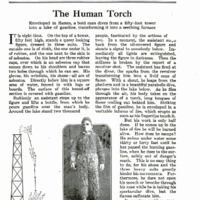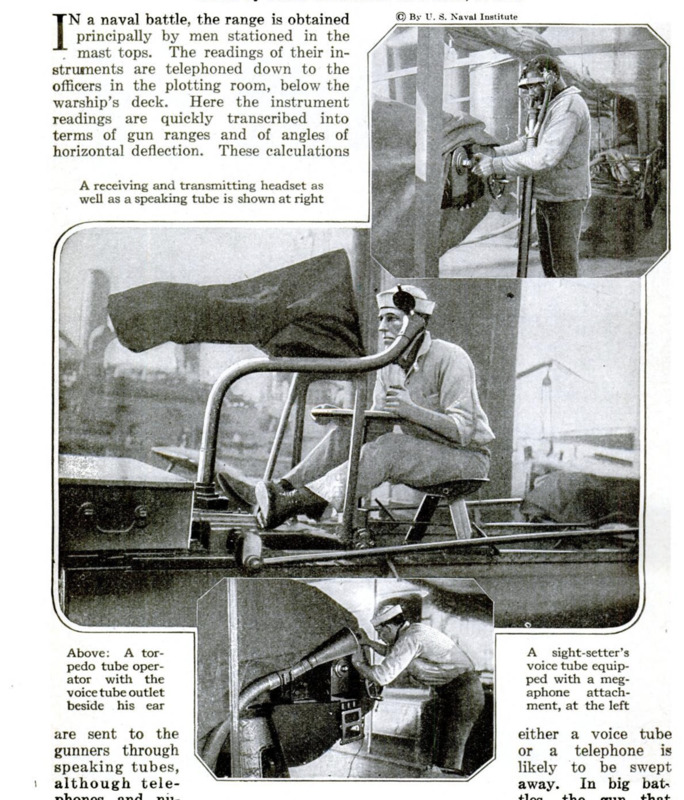Speaking tubes for a ship's gunners
Item
-
Title (Dublin Core)
-
Speaking tubes for a ship's gunners
-
Article Title and/or Image Caption (Dublin Core)
-
Speaking Tubes for a Ship's Gunners. Reporting the range, the hits and the misses Photos by Naval Constructor Elliot Snow, U.S. A.
-
extracted text (Extract Text)
-
IN a naval battle, the range is obtained
principally by men stationed in the mast tops. The readings of their in-
struments are telephoned down to the
officers in the plotting room, below the
warship’s deck. Here the instrument
readings are quickly transcribed into
terms of gun ranges and of angles of
horizontal deflection. These calculations
are sent to the
gunners through
speaking tubes,
although tele-
phones and nu-
meral indicators are often used, to make
sure that the orders will be understood.
For when the battle waxes hottest,
either a voice tube
or a telephone is
likely to be swept
away. In big bat-
tles, the gun that
has but one channel of communication
stands grave chances of being cut off from
the rest of the ship. Should that happen,
the gunners would have to depend upon
the gun’s telescopic sights, and there
would be no checking up of hits or misses
by the spotters in the mast tops.
Thus, the means of communication is
the crux in the modern method of pointing
and firing a battleship’s guns. In our
Navy, voice tubes are generally preferred
to electrical apparatus. Speaking tubes
are just metallic pipes made airtight.
-
Contributor (Dublin Core)
-
U. S. Naval Institute (photos)
-
Language (Dublin Core)
-
eng
-
Date Issued (Dublin Core)
-
1918-01
-
pages (Bibliographic Ontology)
-
30-31
-
Rights (Dublin Core)
-
Public Domain (Google digitized)
-
Archived by (Dublin Core)
-
Filippo Valle
-
Alberto Bordignon (Supervisor)
 Popular Science Monthly, v. 92, n. 1, 1918
Popular Science Monthly, v. 92, n. 1, 1918



